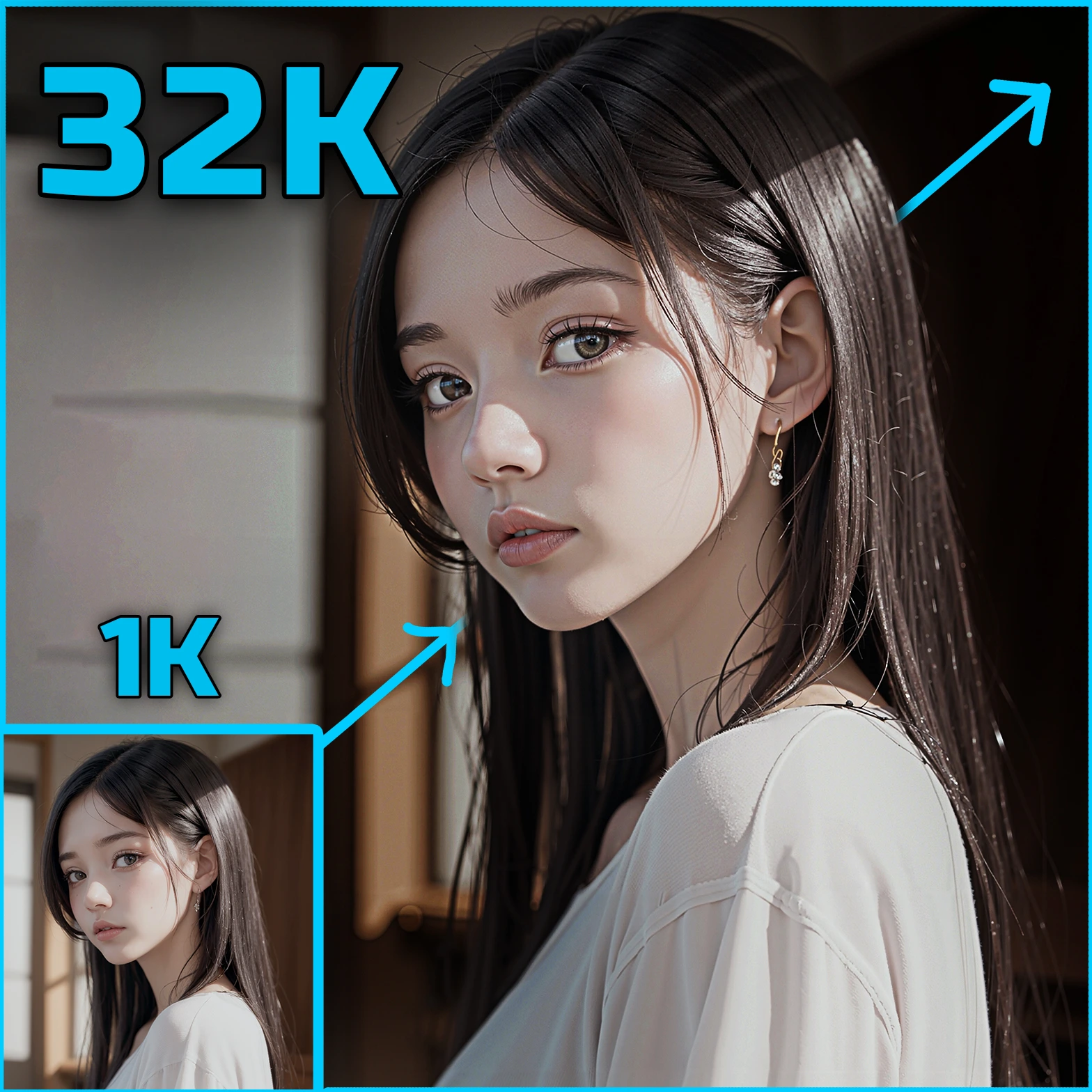ComfyUI Node: 🔎APISR Lterative
APISR_Lterative_Zho
Category🔎APISR
ZHO-ZHO-ZHO (Account age: 624days) Extension
APISR IN COMFYUI Latest Updated
2024-05-22 Github Stars
0.37K
How to Install APISR IN COMFYUI
Install this extension via the ComfyUI Manager by searching for APISR IN COMFYUI- 1. Click the Manager button in the main menu
- 2. Select Custom Nodes Manager button
- 3. Enter APISR IN COMFYUI in the search bar
Visit ComfyUI Online for ready-to-use ComfyUI environment
- Free trial available
- 16GB VRAM to 80GB VRAM GPU machines
- 400+ preloaded models/nodes
- Freedom to upload custom models/nodes
- 200+ ready-to-run workflows
- 100% private workspace with up to 200GB storage
- Dedicated Support
🔎APISR Lterative Description
Enhances image resolution iteratively using AI super-resolution techniques for high-quality upscaling and detail improvement.
🔎APISR Lterative:
The 🔎APISR Lterative node is designed to iteratively enhance the resolution of images using advanced AI-based super-resolution techniques. This node leverages a pipeline to process images, improving their quality and detail through multiple iterations. It is particularly useful for tasks that require high-quality image upscaling, such as enhancing artwork, photographs, or any visual content where detail and clarity are paramount. By iteratively applying super-resolution, this node ensures that the final output is significantly sharper and more detailed than the original input.
🔎APISR Lterative Input Parameters:
pipe
This parameter expects an AI-based super-resolution model pipeline (APISRMODEL). The pipeline is responsible for processing the input image and enhancing its resolution. The quality and type of the model used can significantly impact the results, so choosing the appropriate model is crucial for achieving the desired output.
image
This parameter takes the input image (IMAGE) that you want to enhance. The image should be in a format compatible with the pipeline, typically a tensor representation of the image data. The quality of the input image can affect the final output, with higher-quality inputs generally yielding better results.
crop_for_4x
This boolean parameter (BOOLEAN) determines whether the input image should be cropped to dimensions that are multiples of 4. This is important for certain super-resolution models that require specific input dimensions. The default value is True, ensuring compatibility with most models.
dtype
This parameter specifies the data type for processing the image, with options being float32 or float16. The choice of data type can affect the performance and memory usage of the node. float32 is the default and provides higher precision, while float16 can be used to reduce memory usage and potentially increase processing speed.
🔎APISR Lterative Output Parameters:
IMAGE
The output of this node is an enhanced image (IMAGE). This image has undergone iterative super-resolution processing, resulting in a higher resolution and more detailed output compared to the original input. The output image is typically in a tensor format, ready for further processing or display.
🔎APISR Lterative Usage Tips:
- Ensure that the input image is of high quality to achieve the best results from the super-resolution process.
- Use the
crop_for_4xparameter to ensure compatibility with models that require specific input dimensions. - Experiment with different
dtypesettings to balance between precision and performance based on your hardware capabilities. - Select the appropriate super-resolution model pipeline (
pipe) that best suits your specific use case for optimal results.
🔎APISR Lterative Common Errors and Solutions:
"Please provide the apisr_model parameter with the name of the model file."
- Explanation: This error occurs when the
apisr_modelparameter is not provided or is empty. - Solution: Ensure that you specify the name of the model file in the
apisr_modelparameter.
"Error loading model: [specific error message]"
- Explanation: This error indicates that there was an issue loading the specified super-resolution model.
- Solution: Verify that the model file exists at the specified path and is compatible with the node. Check for any typos in the model file name.
"CUDA out of memory"
- Explanation: This error occurs when the GPU runs out of memory during processing.
- Solution: Try reducing the input image size, using
float16for thedtypeparameter, or freeing up GPU memory by closing other applications.
"Invalid input dimensions"
- Explanation: This error occurs when the input image dimensions are not compatible with the model requirements.
- Solution: Use the
crop_for_4xparameter to adjust the input image dimensions to be multiples of 4.
🔎APISR Lterative Related Nodes
RunComfy is the premier ComfyUI platform, offering ComfyUI online environment and services, along with ComfyUI workflows featuring stunning visuals. RunComfy also provides AI Playground, enabling artists to harness the latest AI tools to create incredible art.



